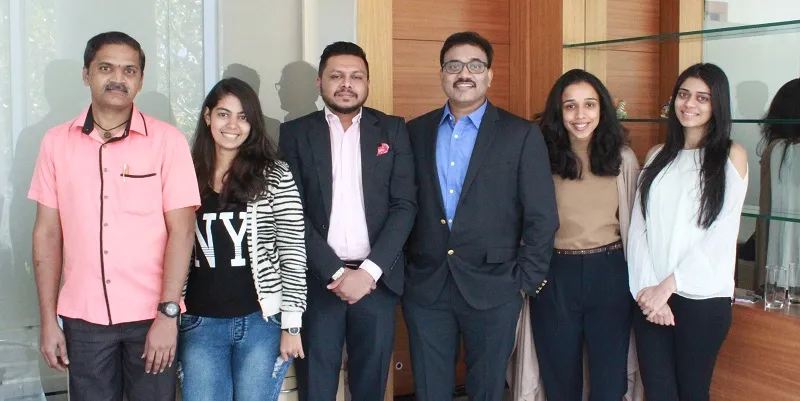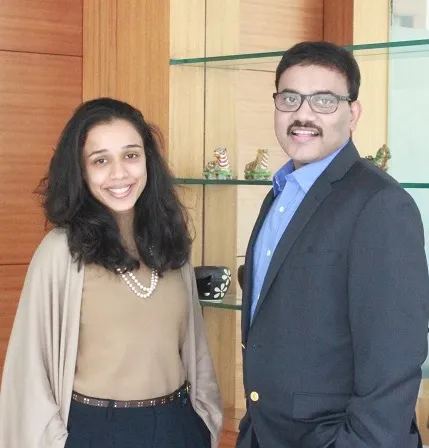Bootstrapped yet profitable in a year, Luxepolis aims to bring luxury to masses
In Greek, ‘polis’ means a city or a close knit community of citizens bound by certain customs. When two entrepreneurs got together to build an online marketplace for fresh and pre-owned luxury goods, ‘Luxepolis’ became the perfect name.
Luxepolis was built to be India’s largest online luxury marketplace where one can buy and sell luxury branded products across a wide range of categories – like a community for luxury product lovers. Co-founded by Namrata Valecha and Vijay KG in December 2015, this Mumbai-based startup remains bootstrapped – yet is cash flow positive and claims to have positive unit economics.

Vijay says that Luxepolis broke even in December 2016, exactly a year after going live. “We clock the country’s highest average order value of Rs 38,000 per order (highest in the fashion and even jewellery category),” he claims, adding that 70 percent of Luxepolis customers come back and purchase frequently.
Building the ‘polis’
Vijay, a native of Hyderabad, did his engineering from NIT Allahabad, and was Chief Business Officer at Nykaa before he founded Luxepolis. Earlier, he worked with Microsoft and Infosys. After exiting Nykaa, Vijay wanted to set up India’s largest online luxury platform.
“I spent the first half of 2015 researching the luxury space in India, and spent time in luxury malls both in Mumbai and Delhi to understand the luxury consumer's psyche and behaviour. I met with luxury brand owners in India across categories including fashion, watches, electronics, home furnishings, real estate and automobiles,” he recollects.
Vijay and Namrata met via a common friend, around the time of assembling the founding team. For Namrata, who has a Master's degree in Commerce, extensive experience in luxury event management and HNI (high net-worth individual) relation management was an advantage. At Luxepolis, she is the chief of client relationships.
A recent ASSOCHAM study shows that high-income group consumers spend over 40 per cent of their monthly income on luxury brands, whereas the middle-income group consumers spend 8–10 percent on luxury products. High net-worth individuals are the target group for startups in the space.
Unique traits
According to a report from Euromonitor International, India is the fastest-growing emerging market for luxury goods, growing by more than $225 million a year – considerably stronger than Singapore and Australia. Online luxury platforms are growing in India, with Zapyle, Confidential Couture, Darveys, and Rock n Roll among the prominent players. But Vijay claims that Luxepolis is the first in the industry to provide an authenticity and grading certificate for every pre-owned purchase. All new product purchases come with original brand price tags.
Luxepolis claims to be India’s largest luxury marketplace with over 500 luxury and high-street brands including Louis Vuitton, Chanel, Hermes, Rolex, etc., that never sell on third-party retail and online formats. They now have 20,000 SKUs across categories such as women’s, men’s, kids', watches, fine jewellery and automobile. Luxepolis ships to pretty much every pin code across India, and picks up products for consignment from all over India. Says Vijay,
E-commerce is still dependent on discounts to attract customers in India. Luxepolis offers luxury branded products, whether pre-owned or brand new old season stock, at discounted prices up to 70 percent. “We have the lowest return rates in the industry, at less than 2 percent.”
In order to build a scalable and sustainable business, there’s a strong proposition to bring in many people into the fold of luxury buying. Vijay says, “Today, only about one percent of India’s population can easily afford to buy luxury branded products. About two percent can afford to buy but not so often. Another three percent aspire to buy at some point in their lifetime. So, it is imperative that Luxepolis' value proposition should be in line with at least top three percent of India’s consumer needs.” This is why Luxepolis’s user interface merged the concept of selling both new and pre-owned luxury.
Tech to win customers
About 40 percent of sale for Luxepolis comes from tier-II and -III towns, and the rest from metro cities. Among their customers, 60 percent are women, including working professionals, small business owners, housewives, college students and fashionistas in the wide age group of 25-60. For research, they use Alexa, Google Analytics and Luxepolis customer data.
Tech, of course, is essentially the backbone of any e-commerce platform. Luxepolis uses a heavily customised PHP-based e-commerce platform called Magento. “We customised the UX to ensure great purchase experience. We spent nearly six months in evaluating and executing the best UxD. We haven’t changed much,” says Vijay. He claims that they have attracted over 1,00,000 unique users every month -- 50 percent of this traffic is from organic searches – by spending little in marketing. “Being an online startup, we spend our marketing budget completely online. We are very active on Facebook, Instagram,” adds Vijay.

Luxepolis claims to have grown more than 11,000 percent since their launch in December 2015. Its revenue comes from the 20 percent they charge as facilitation fees on every product sold on its platform. It do not own inventory, although it manages inventory on behalf of sellers.
Demonetisation woes
When currency of Rs 1,000 and Rs 500 was banned in November 2016, e-commerce was hit like any other business. Luxepolis was no exception, but Vijay says that the situation gave clarity on where and how much to spend in marketing.
“As a result, today we are operating at 80 percent reduction in our marketing budget and we continue to see growth in revenues. Pre-demonetisation, we observed about 80 percent to 20 percent ratio of CoD and prepaid transactions. Post-demonetisation, the numbers have flipped -- we now see 90 percent prepaid transactions and 10 percent COD,” Vijay explains. Even large transactions over Rs 5 lakh are now taking place on credit cards for Luxepolis.
As it is, regulatory impacts often aggravate issues in e-commerce. Often, online luxury product businesses come under scrutiny for fake products, trademark violations, etc. European luxury brands are not allowed to sell luxury goods online unless the business has a brick-and-mortar presence. In this regard, Luxepolis is working towards an offline solution by working with luxury brand owners.
Currently, custom or import duties on luxury goods in India range from 39 percent on leather goods to 200 percent on niche luxury products. According to Vijay, if the duties are normalised to the likes of China or Japan or Singapore, India will have an exponentially growing luxury market. He says,
“We see aggressive adoption of e-commerce and new brands getting launched via online channel. By 2030, India would become home to the fastest growing luxury market in the world.”
In the next one year, Luxepolis plans to set up offices in Delhi and Bengaluru. In the long term, Luxepolis will set an offline presence too, Vijay says. Luxepolis is a team of 10 (six in Mumbai, four in Pune), and more than 20 people based in the US, Europe and Australia and New Zealand. With growing internet penetration in the country, Luxepolis is focused on India to be the next big thing in the luxury market.







